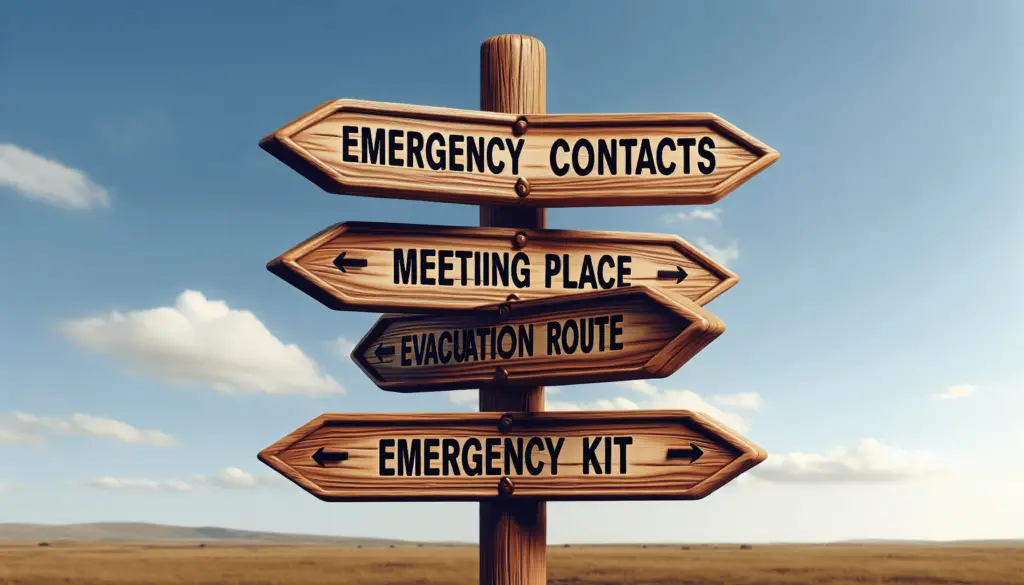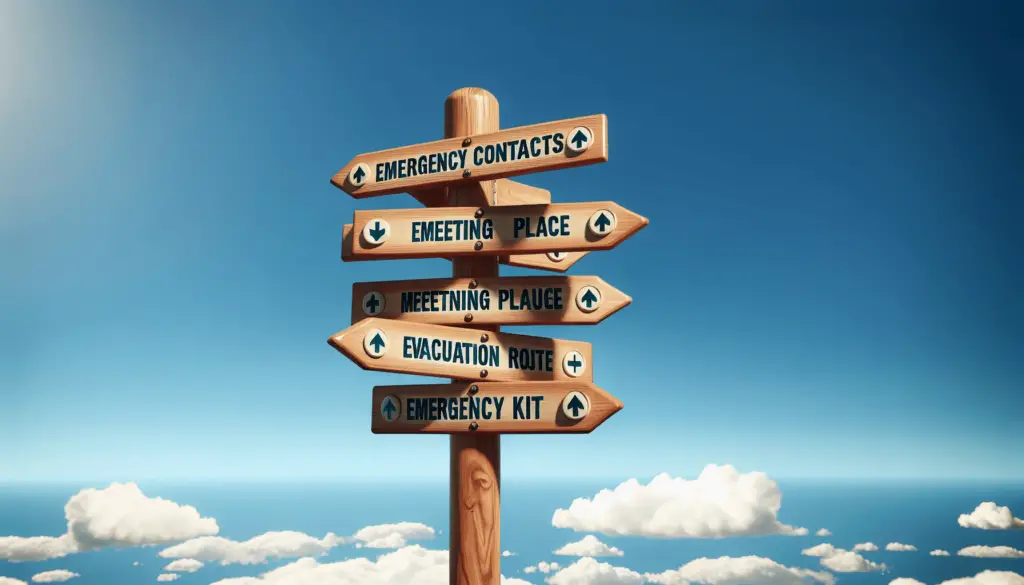Welcome to your guide on creating an emergency communication plan! In times of crisis, it’s important to have a solid plan in place to ensure the safety and well-being of yourself and your loved ones. This article will cover the basics of what you need to consider when developing your own emergency communication plan, including important contacts, communication channels, and what to include in your emergency kit. By following these simple steps, you can be better prepared for any unexpected situations that may arise.
The Basics of Building an Emergency Communication Plan
Have you ever thought about what you would do in case of an emergency? Whether it’s a natural disaster, a medical emergency, or another unforeseen event, having an emergency communication plan in place is essential to ensure the safety and well-being of yourself and your loved ones. In this article, we will guide you through the basics of building an emergency communication plan.
Why Do You Need an Emergency Communication Plan?
Having an emergency communication plan is crucial because it helps you stay connected with your family, friends, and emergency services during a crisis. In times of disaster, communication networks may be overloaded or disrupted, making it difficult to reach loved ones or receive help. By having a plan in place, you can ensure that everyone knows how to contact each other and where to meet up if separated.
Who Should Be Included in Your Plan?
When creating your emergency communication plan, it’s important to include all members of your household, as well as extended family members or friends who may be impacted by an emergency. Consider the needs of elderly family members, young children, or individuals with disabilities when designing your plan. Make sure that everyone knows their roles and responsibilities in case of an emergency.

Creating a Contact List
One of the first steps in building an emergency communication plan is creating a contact list with the names, phone numbers, and email addresses of all family members and emergency contacts. Include the contact information for your local emergency services, such as the police, fire department, and hospital, as well as any utility companies you may need to contact in case of a disaster.
Here is an example of how you can organize your contact list:
| Name | Phone Number | Email Address |
|---|---|---|
| Your Name | (555) 555-5555 | [email protected] |
| Spouse’s Name | (555) 555-5556 | [email protected] |
| Child’s Name | (555) 555-5557 | [email protected] |
| Emergency Services | 911 |
Establishing Communication Protocols
Once you have your contact list in place, it’s essential to establish communication protocols to ensure that everyone knows how to reach each other in an emergency. Decide on a primary and secondary method of communication, such as text messaging, phone calls, or social media, and make sure that everyone has the necessary tools and resources to stay connected.
Text Messaging
Text messaging is often the most reliable form of communication during emergencies, as it requires less bandwidth than phone calls and can be sent and received even when cellular networks are overloaded. Make sure that everyone in your family knows how to send and receive text messages, and establish a designated group chat for emergency communication.
Phone Calls
While text messaging is preferable during emergencies, having a plan for phone calls is also important. Make sure that everyone has a fully charged cellphone with important contacts saved, as well as a backup charger or power bank in case of a power outage. Designate a meeting point or safe location where family members can go if they are unable to communicate via phone.
Social Media
In some situations, social media platforms like Facebook, Twitter, or WhatsApp can be helpful for sharing updates and information during emergencies. Make sure that everyone in your family knows how to use these platforms and has access to them in case traditional communication methods are unavailable.

Establishing Check-In Points
During a crisis, it’s essential to establish check-in points to ensure that everyone is safe and accounted for. Designate specific times or intervals when family members should check in with each other, either through text messages, phone calls, or social media. Make sure that everyone knows the importance of checking in and what to do if they are unable to do so.
Sample Check-In Schedule
- Morning: Check in with all family members to confirm everyone is awake and safe.
- Afternoon: Check in with all family members to update on any changes or developments.
- Evening: Final check-in before bedtime to ensure everyone is accounted for.
Creating Emergency Kits
In addition to having a communication plan in place, it’s essential to create emergency kits with essential supplies that you may need during a crisis. Include items such as food, water, first aid supplies, medications, flashlights, batteries, and blankets in your emergency kit, and make sure that everyone in your household knows where the kits are located.
Sample Emergency Kit Checklist
- Non-perishable food and water for 72 hours
- First aid kit with bandages, antiseptic, and medications
- Flashlights with extra batteries
- Blankets or sleeping bags
- Personal hygiene items
- Cash and important documents (ID, insurance information)
Rehearsing Your Plan
Once you have created your emergency communication plan and assembled your emergency kits, it’s important to rehearse and review your plan regularly to ensure that everyone knows what to do in case of an emergency. Conduct practice drills with your family members to simulate different scenarios and test the effectiveness of your communication protocols.
Sample Emergency Drill Scenarios
- Fire drill: Practice evacuating your home and meeting at a designated location outside.
- Severe weather drill: Practice seeking shelter in a safe location within your home.
- Medical emergency drill: Practice administering first aid and contacting emergency services.
By rehearsing your plan regularly, you can identify any weaknesses or gaps in your communication strategy and make necessary adjustments to improve the effectiveness of your plan.
Conclusion
Building an emergency communication plan is a vital step in preparing for unforeseen events and ensuring the safety and well-being of your family. By following the basics outlined in this article, you can create a comprehensive plan that outlines how to stay connected and informed during a crisis. Remember to include all household members in your plan, establish communication protocols, designate check-in points, create emergency kits, and rehearse your plan regularly to be fully prepared for any emergency that may arise. Stay safe, stay connected, and be prepared for whatever comes your way.
